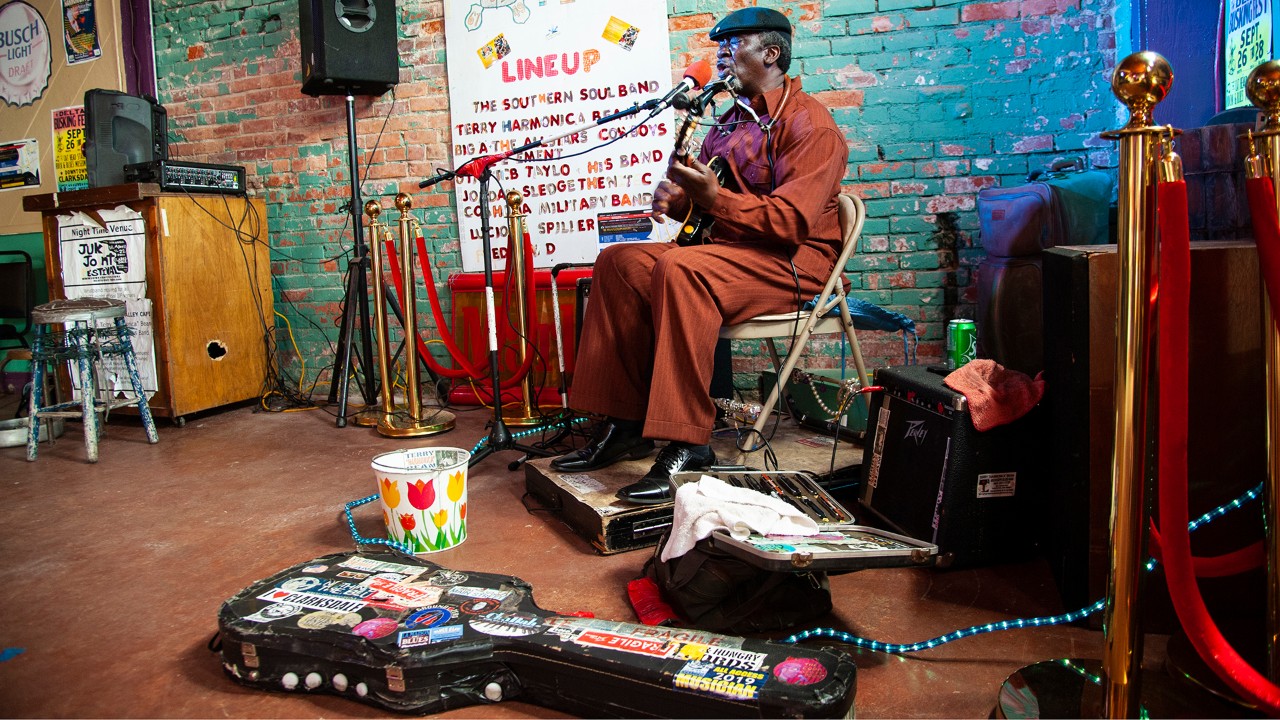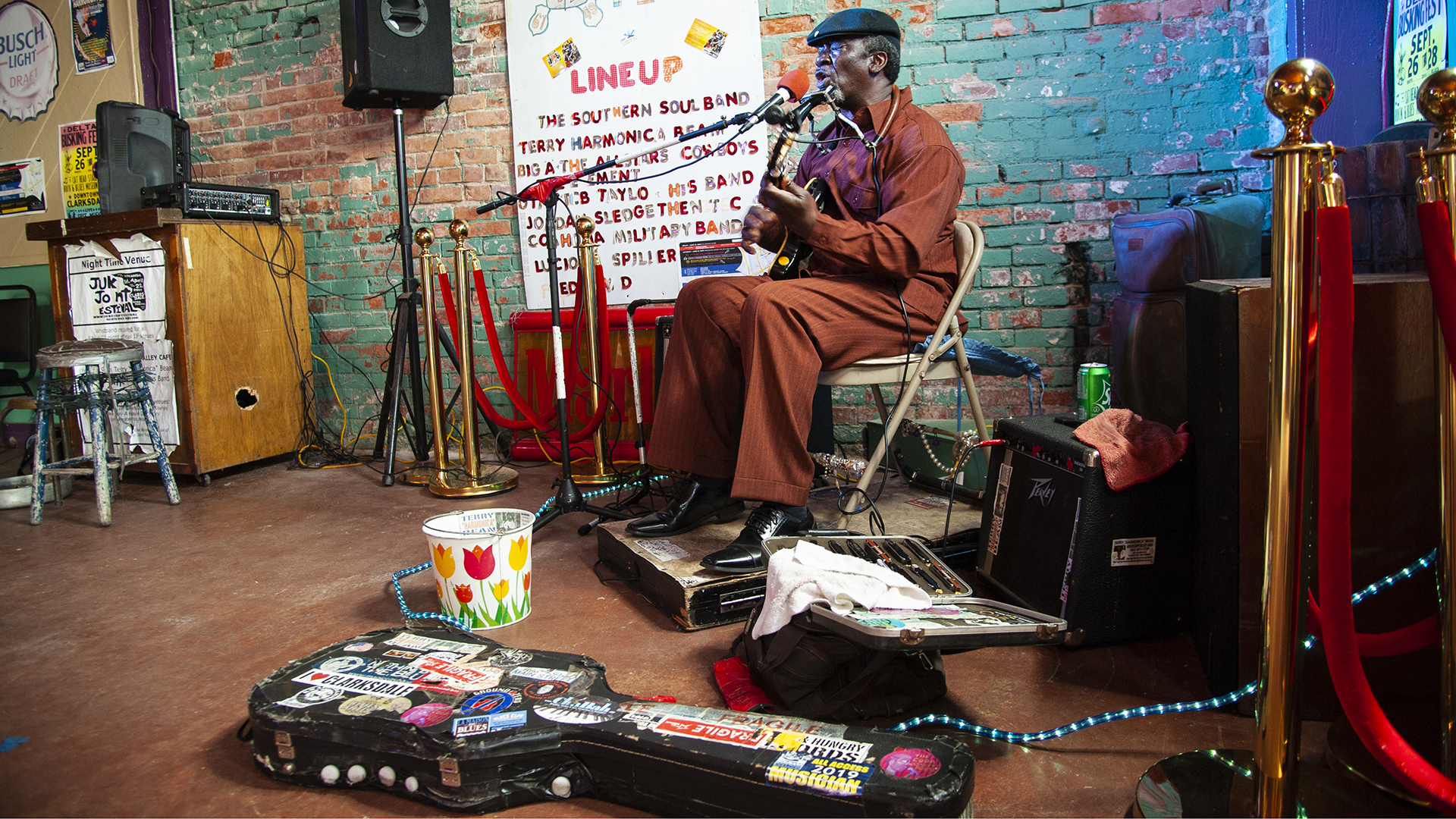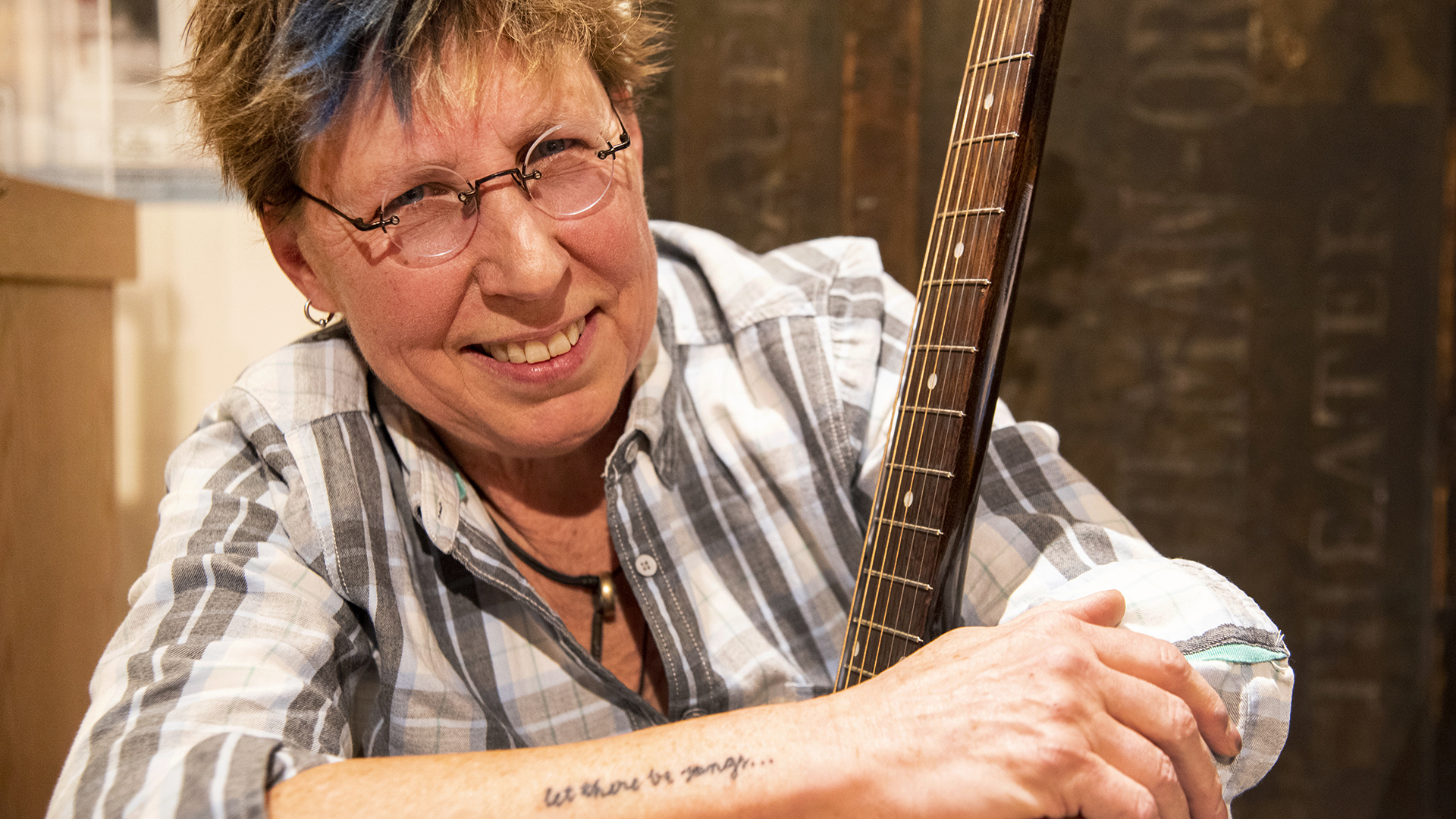The Great River Road: Missouri to Louisiana

Terry “Harmonica” Bean plays inside the Delta Blues Alley Cafe during Clarksdale, Mississippi’s annual Juke Joint Festival.
Story and photos by Joe Rogers
Joe is a travel writer and photographer based in Denver, Colorado. See more of his work at The Travelin' Joe or on Instagram.
A drive south along the Mississippi River leads to memorable music.
Gregg Haynes picked up a black Gibson ES-355 embellished with gold hardware and a signature scrawled on the body. He held it out in my direction and asked, “You play?”
I looked at B.B. King’s name engraved in gold and at "Lucille” — the name of many of the blues master’s guitars — emblazoned in white on the headstock. At 20, inspired by King, I taught myself to play guitar. Inconsistent practice for a couple of years led to mediocrity, and then I stopped altogether. I shook off the memory.
Spellbound, I looked at Haynes, I looked at that guitar and I said, “I used to.”
We were in Glasgow Village, a suburb northeast of St. Louis, Missouri. Historically, this river town was a stopping point for musicians traveling south to Memphis or north to Chicago. Haynes, aka “Happy Guitar,” grew up in a housing project in St. Louis, making music in his building’s laundry room with other kids. By age 10, he was playing guitar for parishioners during Sunday morning worship at his church. Today, Haynes is an ordained minister and an accomplished gospel and jazz recording artist.
Four days earlier, I’d turned up the music in my rental car and begun a 3,000-mile journey along The Great River Road, one of America’s most treasured routes and one that showcases the culture, history and traditions of 10 states bordering the Mississippi River. I’d started at the mighty river’s headwaters in Minnesota and was making my way to Louisiana, where the Mississippi spills into the Gulf of Mexico.
Haynes handed me B.B.'s actual guitar and said, “Try to play a little something.” I hadn’t had a pick in my hand or strummed a chord in years, and now I was holding Lucille. Somehow, I managed a quick bluesy riff, then stopped. “That sound,” I said. “I’d know it anywhere!”
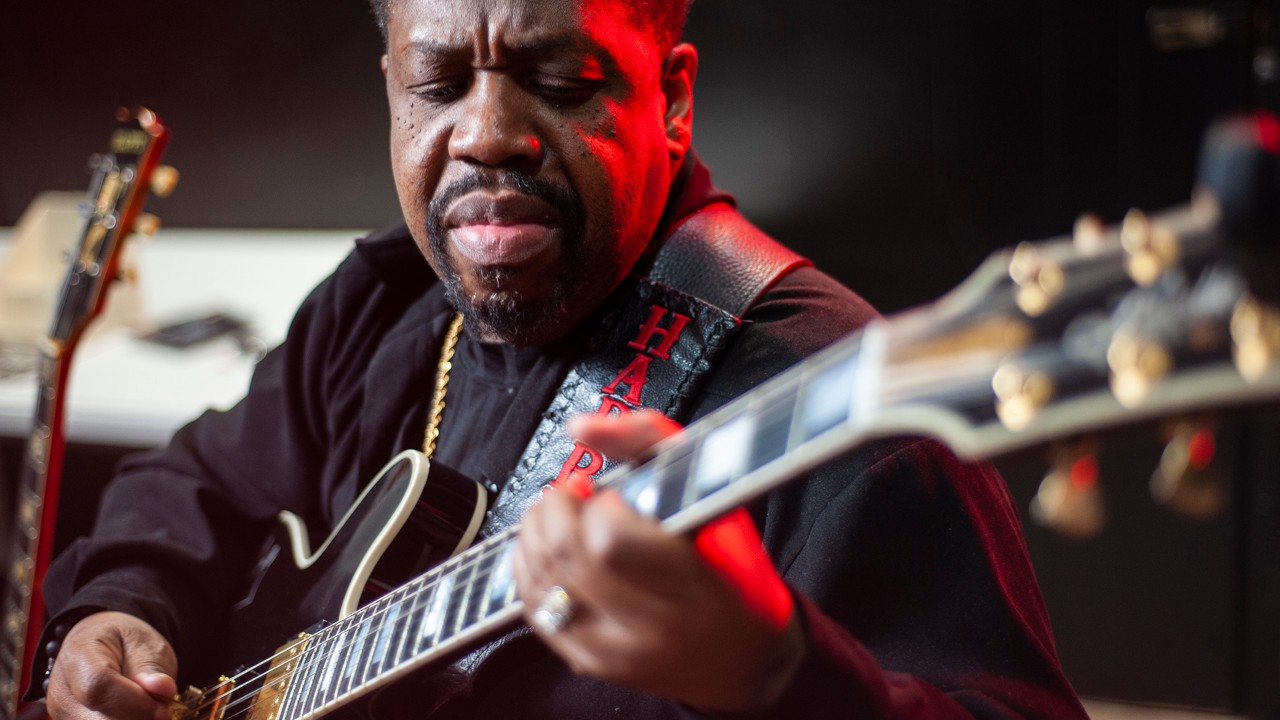
Gregg Haynes is an accomplished gospel recording artist in St. Louis.

Established in 1948, the Blue Front Café in Bentonia is the oldest juke joint in Mississippi.
Memorable Music in Memphis
As a young musician, Haynes was allowed to play only spiritual music because everything else was considered the devil’s music. “Oh, but I loved the devil’s music — the sound,” Haynes said, chuckling. “My cousin taught me about Wes Montgomery and B.B. King. That’s how I was introduced, listening to the radio after hours with him.” Then Haynes laid down some devilish licks that King himself would be proud of.
That evening, an eclectic mix of musicians converged at the National Blues Museum in downtown St. Louis for the weekly “Sittin’ on the Porch Jam Session.” They ranged in age, race, musical background and instrument choice. Regulars refreshed their chops, and a 68-year-old newcomer moved from initial timidity to a furious, foot-stompin’ performance of “Got My Mojo Workin!” Patrons danced, clapped, hooted and hollered. It was lively!
Still feeling energized the next day, I hit the road with Memphis in my sights and the radio pouring out blues. I made quick work of the 4-hour drive along stretches of Interstate 55 and Highway 61, with the river meandering in and out of sight.
Memphis is one of several towns that claim to be the birthplace of rock and roll. It was here a young guitarist named Riley B. King transformed from “Beale Street Blues Boy” to “Blues Boy” to B.B. King. Music lovers and others touring Memphis can explore Elvis Presley’s Graceland, the W.C. Handy House Museum, Sun Records and world-famous Beale Street, a three-block, neon-lit, melting pot of good times and live tunes.
That night, entertainer Memphis Jones took up residency in B.B. King’s Blues Club. I stayed a while and then moved on to hear Memphis soul at Kings Palace Cafe. Next, I was up for a little country and rock at Tin Roof, and then it was on to hear Vince Johnson & the Plantation Allstars, who passed the tip bucket around at the Rum Boogie Café. From there, I continued to walk Beale Street, enjoying jam sessions that went on deep into the night.
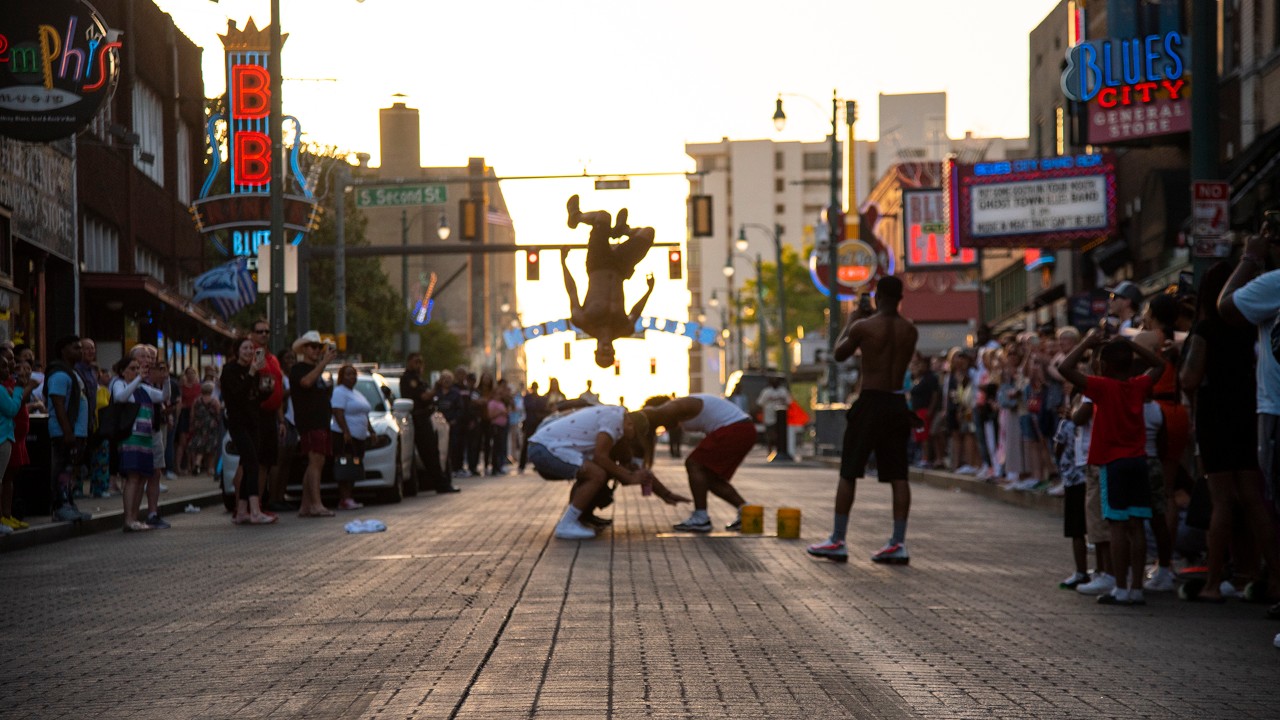
The Beale Street Flippers entertain crowds with their acrobatic artistry in Memphis.
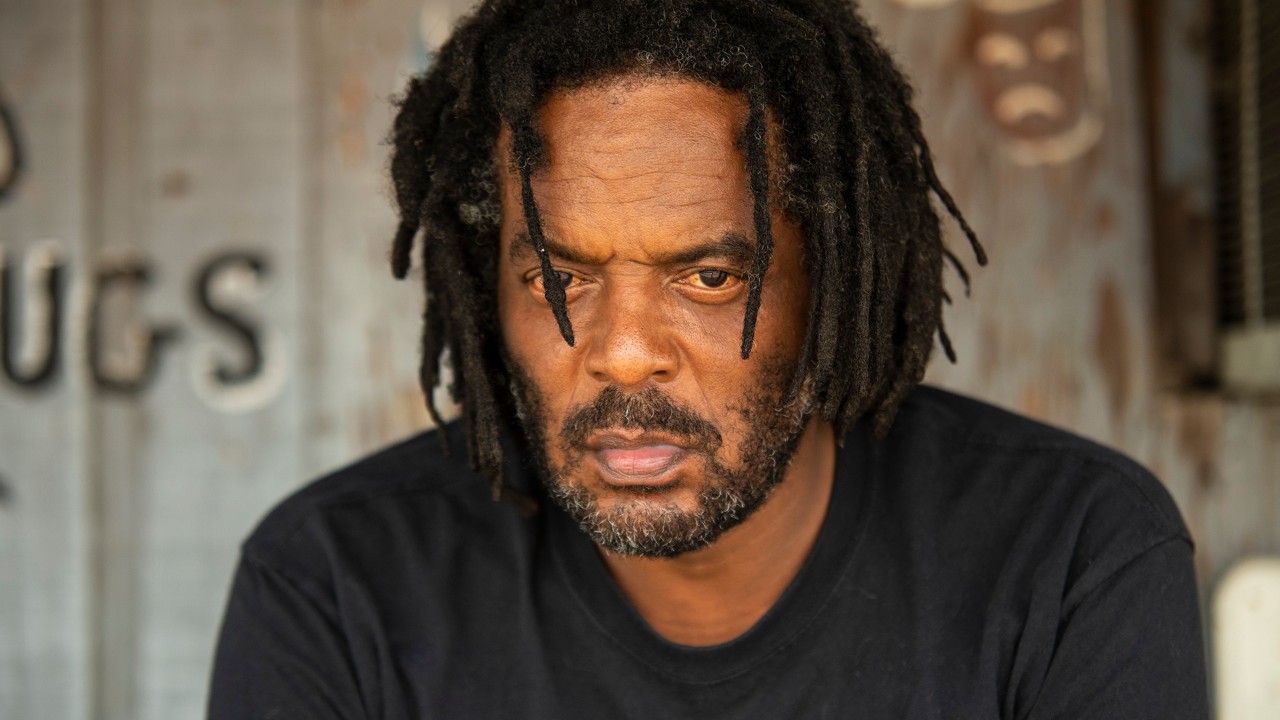
Musician Lucious Spiller begins his shows with "Walk with Me, Lord," an old spiritual. "It was my grandmother's favorite song," he said, "but I think it also cleanses the spirit of the room before I play."
Visiting 'The Home of the Blues’
The following morning, I drove south from Memphis into Mississippi on Highway 61, aka the “Blues Highway.” Decades ago, this storied stretch of highway connected musicians from the south to stages in northern big cities and on into music history. Blues icons such as Edward John “Son” House, Muddy Waters, Howlin’ Wolf and B.B. King all grew up near the historic roadway, and dozens of songs have been recorded about it.
Clarksdale, known as “The Home of the Blues,” sits at the intersection of Highways 61 and 49, where legend holds that guitarist Robert Johnson sold his soul to the devil in exchange for blues-playing virtuosity. The town hosts the Delta Blues Museum, boasts live blues music nightly and presents numerous music festivals from April to November. During my two-day visit, the energy was at full tilt, thanks to the annual Juke Joint Festival.
I listened to music everywhere from Cat Head Blues Store and back alleyways to local venues such as Ground Zero Blues Club and Delta Blues Alley Cafe. By day, I listened to Australia “Honeybee” Jones Neal, Bentonia blues legend Jimmy “Duck” Holmes and Terry “Harmonica” Bean. By night, I stood shoulder to shoulder inside Red’s Lounge, where the dance floor and the stage often mesh, with fans vibing to Lucious Spiller one moment and 23-year-old Grammy winner and native son Christone “Kingfish” Ingram the next.
Each night I thought about myself at 20, when I was learning to play the blues, and I wondered what that younger version of myself would say knowing that my guitar has sat unplayed for years. I fell asleep promising myself that would change.
The next morning, as I drove south from Clarksdale, the sun beat down from its midday perch, highlighting rows of tilled soil extending across the flat Mississippi Delta landscape like strings of a guitar.
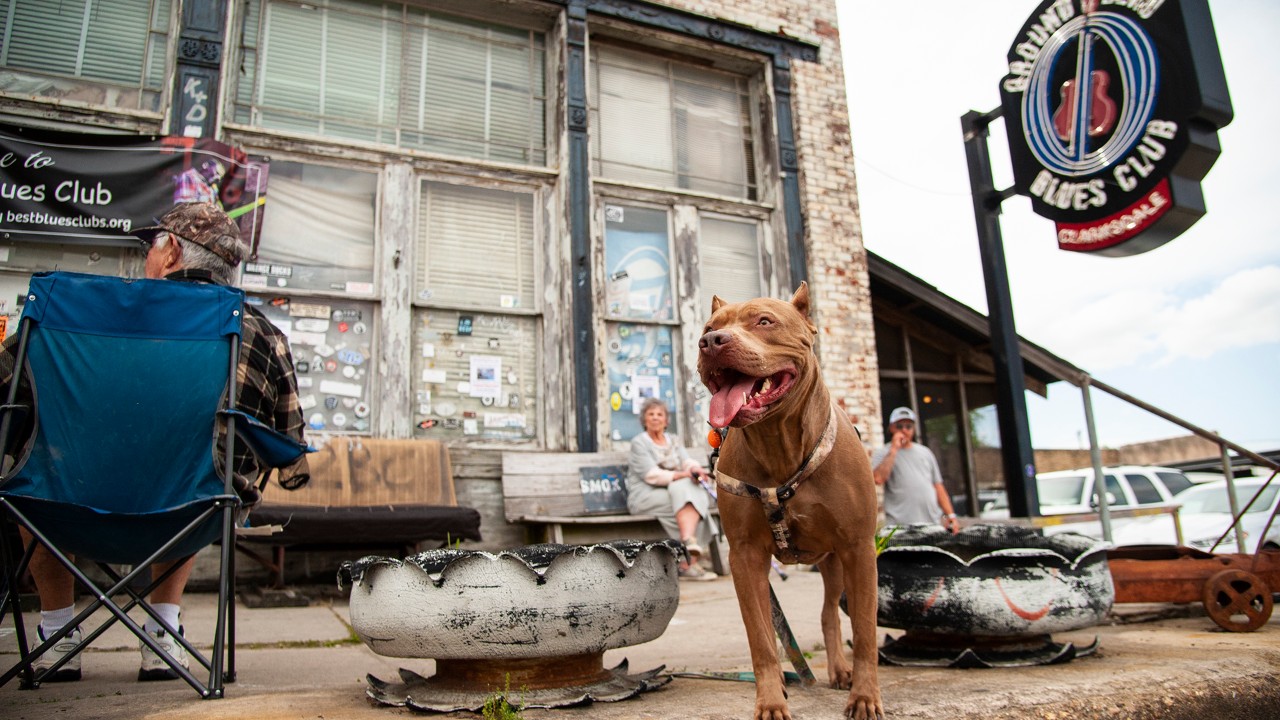
The Ground Zero Blues Club in Clarksdale is often named one of the best in America.
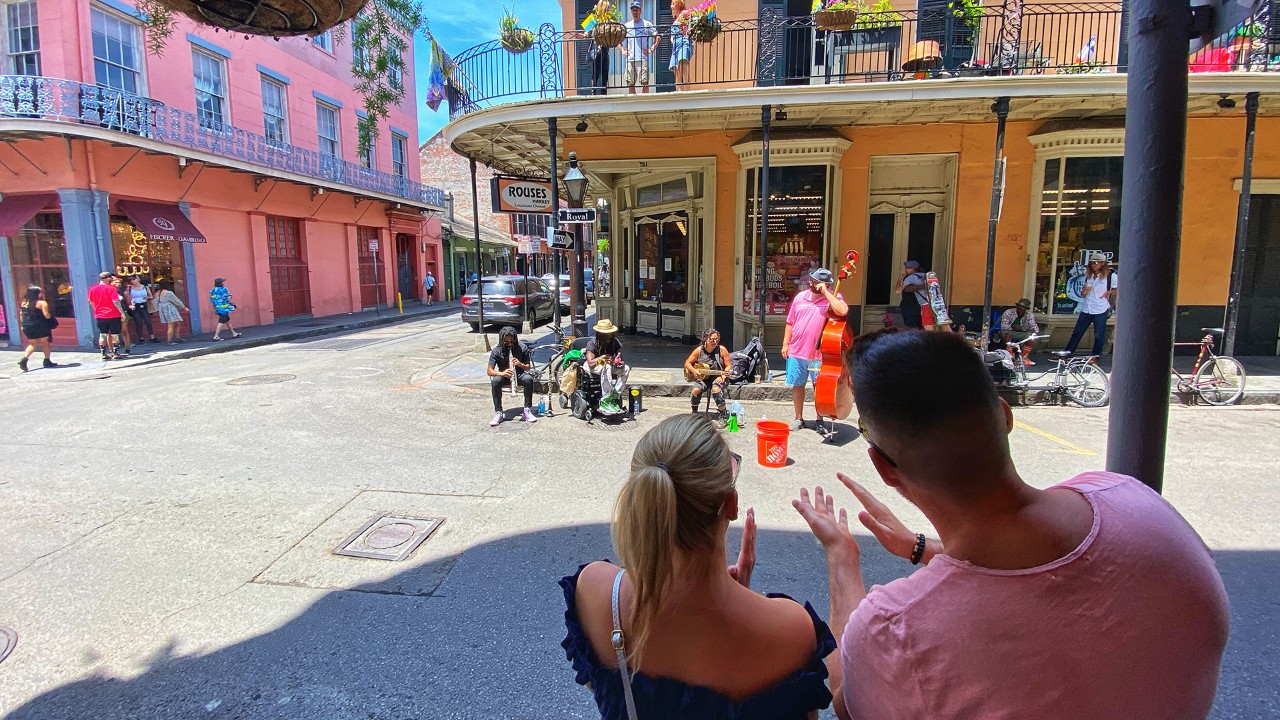
Day and night, buskers perform along Royal Street in New Orleans' French Quarter.
My ‘Go-To’ Music City
Occasionally, I’d detour off the Great River Road and drive farther into the delta to visit stops on the Mississippi Blues Trail, but I always returned to the river to visit towns such as Vicksburg and Natchez. From Natchez, I set out on the remaining 250 miles into Louisiana and on to New Orleans.
In that legendary city that’s always bursting with music, the French Quarter has always been my go-to destination, not just for its eateries, Spanish flat-tiled roofs, tropical colors and ornate ironwork architecture, but for its club settings and the many musicians busking from Bourbon Street to the riverbank.
For two days, I soaked up the music: Traditional jazz inside Fritzel’s and Preservation Hall, saxophone serenations and gypsy jazz ensembles on Royal and St. Peter streets, improvisational percussive drum hits on Conti Street, second line parades near Bourbon Street, and guitar, trombone and trumpets in Jackson Square.
That’s how my music-fueled, 10-day road trip came to a close. If there’s a drive that sings louder than the Great River Road, I haven’t yet found it. Now hand me my guitar!
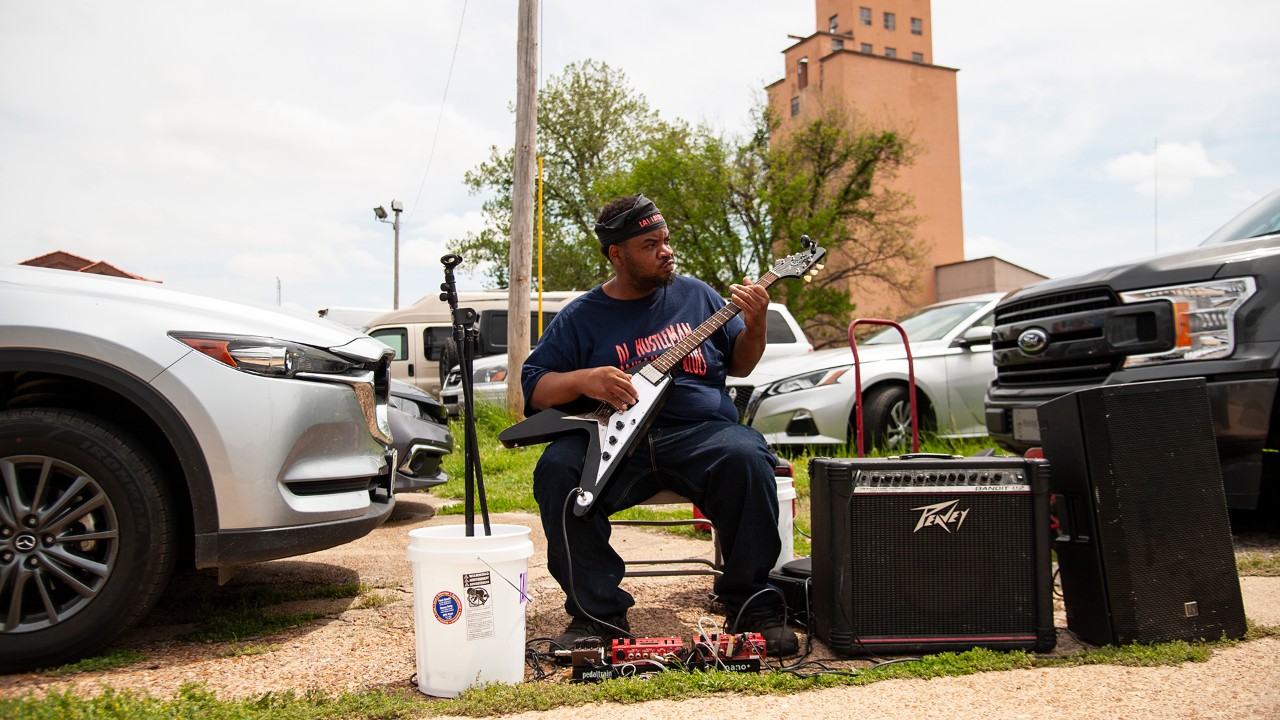
Obbie Riley, aka DJ Hustleman, plays for passersby in Clarksdale.
Related
Read more stories about the Great River Road drive.
- The Great River Road: Missouri to Louisiana
- The Great River Road: Minnesota to Missouri
